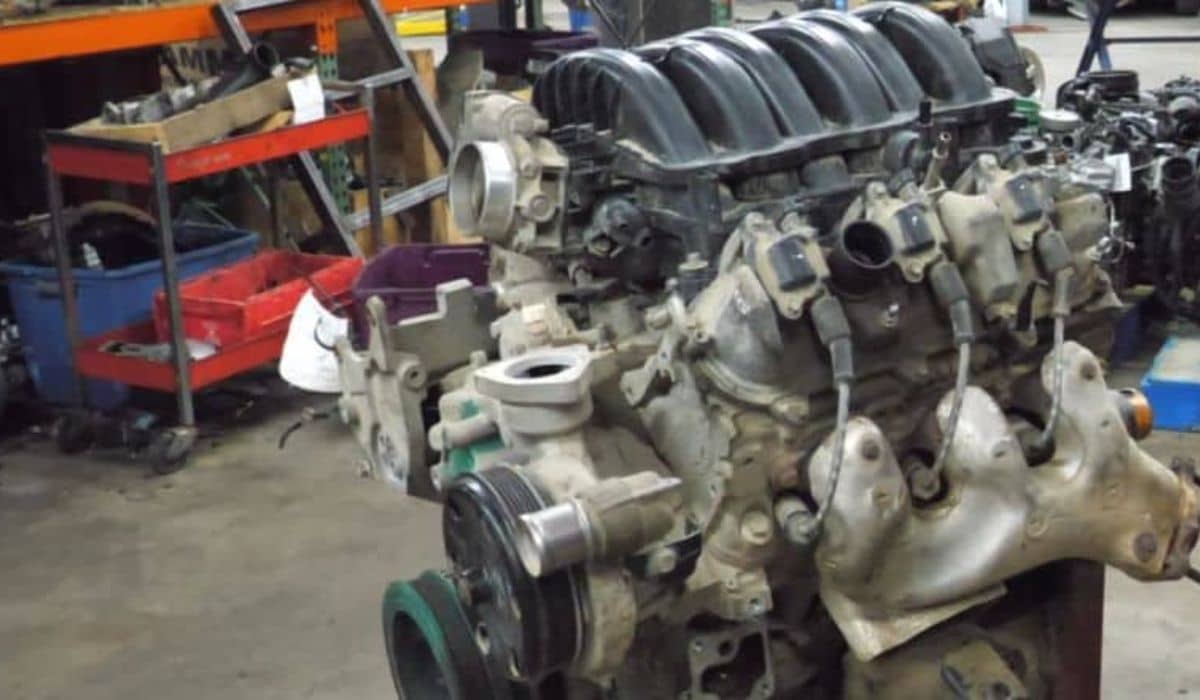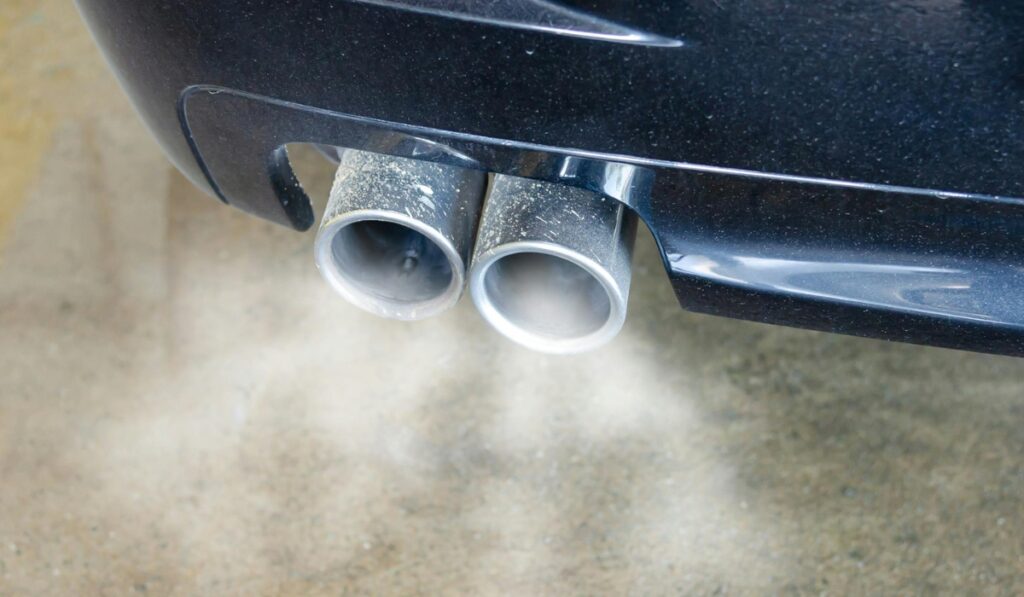Although it has been around since the late 80s, the 4.3L V6 engine is still thought of as one of the top engines that can be found on the market.
4.3L V6 engines have some of the most common issues that lead to misfiring, despite their rock-solid performance. You must be well-versed in these matters pertaining to the 4.3L Vortec engine before obtaining it.
Starting to troubleshoot your 4.3 Vortec engine Problems can be a confusing and empowering experience all at once.
This guide is designed to give you a complete picture of how to deal with typical issues and how to solve them, as well as to explain the reasoning behind common problems. Come on, let’s jump right into the realm of top-notch troubleshooting.
Problems with the 4.3L Vortec engine
The 4.3L V6 Vortec Engine most often has these issues:
· Mysterious Sounds
· Ignition Quandaries
· Intake manifold gasket leaks
· Distributor and distributor caps failure
· Fuel Leaks in CMFI (CPI) System
· Fuel System Gremlins
· Air Intake Anomalies
· Stuck Poppet Valve in CSFI System
· MAP Sensor problem
· Throttle position sensor problem
· Plugged Vacuum Passages
· EGR Valve failure
Today, we’re covering the top 5 4.3 Vortec engine Problems. In this guide, we’ll address these issues and provide solutions to keep your ride running smoothly. So buckle up as we reveal the secrets behind these common issues, empowering you to troubleshoot confidently.
Intake Manifold Gasket Leaks
Elastomeric intake manifold gaskets crack and deteriorate at high engine temperatures. Coolant port damage from heat, motion, and corrosiveness under high heat and pressure causes these gaskets to fail early.
Gasket deterioration is most noticeable at engine head corner coolant ports. Major coolant leaks threaten engine damage from minor issues. Damaged gaskets leak coolant due to engine head-intake manifold pressure difference.
White exhaust smoke and chocolate milk residue under the oil cap indicate coolant infiltration into the engine cylinder from a broken gasket. Misfiring, low coolant, rough acceleration, and engine overheating indicate an air intake gasket leak.
Troubleshooting Solutions for Intake Manifold Gasket Issues
· Regular Inspection
· Coolant System Maintenance
· Coolant Port Repair
· Identifying Gasket Integrity
· Comprehensive Gasket Replacement
· Engine Performance Monitoring
· Oil and Coolant Checks
Distributor and Distributor Caps Failure
Distributor and cap issues in 4.3 Vortec engines affect spark timing and ignition voltage transfer. The distributor cap holds spark plug terminals for the 4.3 V6’s six cylinders.
Rotor, centered in cap, connects to distributor coil and rotates with distributor shaft, driven by camshaft gear drive. A spring-loaded carbon brush under the cap touches the rotor’s metal.
When the camshaft turns, the distributor shaft turns the rotor, firing the spark plugs sequentially.
Ignition system failure can result from 4.3 Vortec ignition distributor cap and rotor corrosion. Cap and rotor contacts wear out like high-voltage spark plug electrodes. It can cause rough idle, misfire, stalls, and cranking.
Troubleshooting Solutions for Distributor and Distributor Cap Failure
· Visual Checks
· Check Internal Terminals
· Rotor and Shaft Inspection
· Address Coil Connection Issues
· Cap Replacement
· Rotor Assessment
· Camshaft Alignment
Fuel Leaks in CMFI (CPI) System
Spider-shaped CPI systems on engines have intake tubes around them. One fuel injector presses six CPI intake manifold tubes. Spring-loaded poppet nozzles in each tube feed fuel to its cylinder through the intake valve.
Through various fuel pump recirculation rates, the CPI system’s fuel pressure regulator maintains fuel injector pressure. Fuel pressure presses the fuel pressure regulator diaphragm against the spring. Intake poppet valve opens.
Engine misfires may result. Since all CPI poppet nozzles are connected, if one leaks, the others will lose fuel pressure.
An engine with excessive fuel leakage may exhibit:
· Low acceleration
· Extended cranking
· Poor fuel economy
· Unsteady rest
· Too much black exhaust smoke
Troubleshooting Solutions for Fuel Leaks in CMFI (CPI) System
· Identify Leaks
· Inspect Fuel Lines
· Ensure Proper Sealing of Fuel Injector O-Rings
· Check Fuel Fittings and Connections
· Fuel Rail Inspection
Stuck Poppet Valve in CSFI System
The CSFI fuel pressure regulator maintains 60-66 psi with the engine off. The system uses a fuel metering body with six sequential control valves for precise fuel injection to improve emissions, performance, and fuel economy.
CSFI has a mass airflow sensor, unlike CPI. Each fuel injector and poppet nozzle assembly is serviceable separately. Fuel enters the engine cylinder when the poppet nozzle’s ball rises during firing. Deposit on the valve ball causes CSFI poppet valves to stick.
Due to less spraying, CSFI poppet nozzles may gum up more than CPI. Remaining fuel on the poppet valve causes varnish, nozzle restrictions, and cylinder misfires.
Troubleshooting Solution for Stuck Poppet Valve in CSFI System
Unsticking and cleaning fuel injector poppet valves can save CSFI injectors from replacement. The J 41413 Evap Pressure/Purge Station and J 44466-10 pressure regulator/hose assembly provide 150 psi for the procedure.
The J 39021 fuel injector tester and accessories energize the injector. Running the engine on 10% Top Engine Cleaner and 90% gasoline removes poppet valve deposits after unsticking.
Converting the CSFI system to MFI (Multiport Flexible Injection) eliminates poppet valve components and is the best solution if problems persist.
MAP Sensor Problem
MAP stands for manifold pressure sensor. MAP sensors measure pressure and calculate fuel needs to keep engines running smoothly. A throttle body sensor located on the throttle body measures throttle valve position.
Pressing the accelerator pedal opens the throttle valve to let more air in. When the pedal is pressed, the throttle position sensor measures its depth and sends it to the throttle body.
A bad MAP sensor and throttle body sensor symptoms:
· Rough engine, hard to accelerate or decelerate
· Hard to start engine
· Poor fuel economy
Troubleshooting Solutions for MAP Sensor Problems
· Check for Loose or Damaged Wires
· Clean the MAP Sensor
· Verify Vacuum Connections
· Test MAP Sensor Voltage
· Scan for Fault Codes: OBD-II Scanner
· Inspect for Vacuum Leaks
Conclusion
This guide gives you the confidence to fix any 4.3 Vortec engine Problems. Troubleshooting requires more than just fixing problems. You must also understand your engine’s needs and ensure a smooth ride.
You can confidently face the road ahead with the knowledge you need to maintain your 4.3 Vortec engine.





